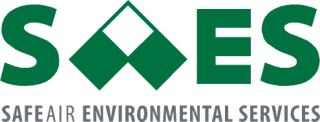5 Crucial Steps Involved in Risk Assessment
According to the Health and Safety Executive (HSE), an independent watchdog for work-related health, illness and safety in Great Britain, risk assessment is “….a careful examination of what, in your work, could cause harm to people, so that you can weigh up whether you have taken enough precautions or should do more to prevent harm…”.
Thus, it can be concluded that risk assessment plays a crucial role in management of health and safety factors in a work environmentthrough reduction in accidents/incidents level. The lines below will make it clear to you why risk assessment is necessary for your workplace safety and how to ensure an effective risk assessment.
Necessity of a Risk Assessment
The best time to perform a risk assessment is when you or some other employee is about to engage in a work that may be risky, resulting in ill-health or injury. Select someone from your organization to attend and be a part of the risk assessment training so that the person is able to identify hazards associated with your organization and categorize as well as evaluates the risks involved. Only through these abilities can you ensure that your organization conducts a ‘sufficient and suitable’ risk assessment.
Performing a Risk Assessment
You will not come across any fixed rules on carrying out a risk assessment successfully, however, some general principles need to be followed for proper risk assessment. The following 5 steps are incorporated in a risk assessment to ensure that it is a correct and effective one:
- Hazard identification
- Deciding how and who can be potentially harmed
- Evaluating the risks and deciding on control measures
- Recording the findings
- Reviewing the assessment and updating when required
Step no.1- Hazard Identification
The first thing that you need to know is that ‘risk’ and ‘hazard’ have separate meanings. While a hazard means something that has the potential to harm, risk is defined as the possibility of realizing that potential. You can identify hazards with the help of various techniques like asking the workers/employees, or inspecting the workplace.
Step no. 2- Deciding How and Who can Be Potentially Harmed
After you have been able to identify a good number of hazards, it is necessary for you to understand who all can be harmed and in what ways. For example, members in the work group and workers in a warehouse.
Step no.3- Evaluating the Risks and Deciding on Control Measures
Once the hazards are identified and the people who can be harmed are found out, the next thing in line is to secure the area so that the people are not harmed in any way. Either remove the hazards or make sure that the risks are controlled. In this way you can prevent people from getting injured.
Step no.4- Recording The Findings
All your findings after inspecting the workplace, should be recorded in a written document. This is a legal requirement in workplaces with 5 or more workers/employees. Moreover, the recordings of the findings also prove that you have been able to identify the hazards, decide how and who can be potentially harmed along with your plan of eliminating these hazards and risks.
Step no.5- Reviewing The Assessment and Updating When Required
Don’t forget that there are some workplaces that don’t change with time. For such places, the risk assessment should be continuously reviewed and updated from time to time.
If you want professionals to undertake the risk management of your organization, hire qualified consultants such as Safe Aires, who have relevant experience in hazard and risk assessmentfor workplace safety.
